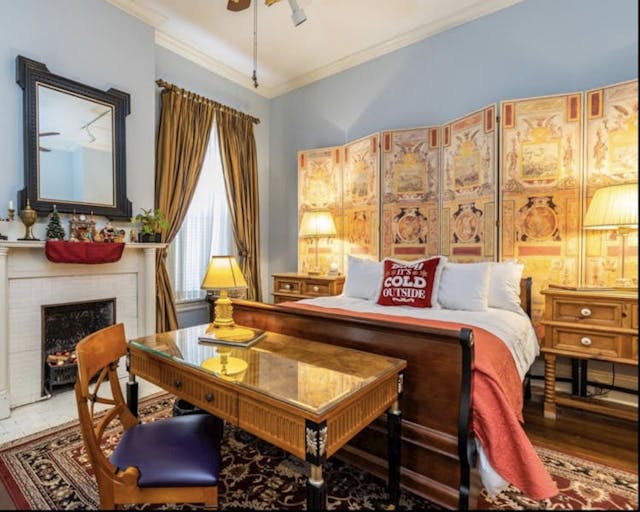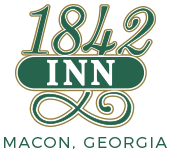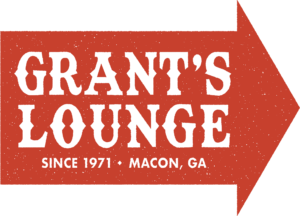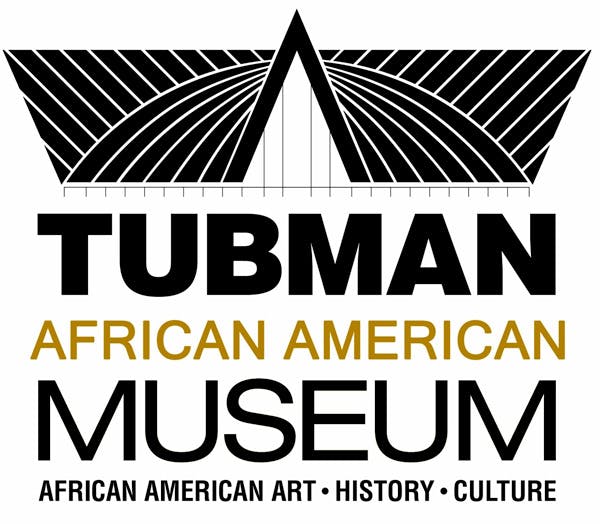Ryan Anderson | April 7, 2023
Why is Macon Interesting?
On music, Allman, and lovable dives
Recommended Products
A newly opened boutique hotel in the heart of downtown Macon.

If you’re more of a bed-and-breakfast person, check out The Burke Mansion.

Another bed-and-breakfast option in Macon.

Originally opened in 1976, The Rookery was purchased in 2009 and has led the revitalization of downtown Macon.
A small tiki lounge open 5pm-11pm, Thursday through Saturday, immediately transporting visitors to a South Pacific paradise of rum drinks.

A revived dive atmosphere hosting some of the best up and coming acts in the region.

A park preserving the rich history of American Indians in the area, featuring Mississipian era platform mounds.

The Southeast's largest museum dedicated to the Art, History, and Culture of African Americans.
Ryan Anderson (RJA) is a freelance marketing exec based in Atlanta, GA. He’s written WITIs about counties, statistical paradoxes, green hydrogen, sound in sports, and more. He’s never lived in Macon, but really thinks you should visit.
Ryan here. Nestled just outside the geographical center of Georgia, Macon is a city of 150,000 people along the Ocmulgee River. For over 17,000 years people have called this little stretch of Southeast home, and that’s not something you can say about many places in North America.
But Macon has seen some tough times. From 1970 to 2010 the city’s population dropped by 30,000, major employers were fleeing for bigger and better connected cities, and airlines were pulling routes out of the regional airport. All of the factors were there for a prolonged decline.
Thankfully, over the last decade or two a growing number of proud Maconites, both native and transplants, have been investing in the city and helping turn it into a place worth seeing.
But the fact of the matter is you can’t talk about Macon without talking about music. Nearly 50 years past the peak of its influence, it’s easy to forget how important Macon was to the success of Black artists, and the creation of Southern Rock.
Macon keeps better company than you realize (shirt via BS)
Macon is the birthplace of Little Richard and where Otis Redding came of age. Otis’s success, both during his too-short life and posthumously, helped fund the creation of Capricorn Records.
If your knowledge of Capricorn Records only extends to when the resurrected version of the label was pumping out gold records for 311 and Cake in the 1990s then boy do I have some news for you.
In the late 60s, Phil and Alan Walden saw the opportunity to expand beyond managing Black artists like Otis Redding, Percy Sledge, and Al Green. There was a growing breed of rock coming out of the South, and they leaned hard into it, discovering or creating acts like The Charlie Daniels Band, The Allman Brothers Band, and The Marshall Tucker Band.
With millions of records sold, their influence went far beyond just music. There’s an argument to be made that Capricorn Records, and The Allman Brothers Band in particular, put Jimmy Carter in the White House. Now, I’m not making that argument, but Jimmy Carter did.
Also, if you spent time around Macon you knew there were 2 rules for talking to Gregg Allman. “Don’t ask about Duane. Don’t ask about Cher.”
In more recent years, it’s where Mike Mills and Bill Berry met to begin forming what became R.E.M., and where Jason Aldean rose to country stardom.
So it should come as no surprise that there are great music festivals in this city. Chief among them being Bragg Jam, featuring what are honestly some of the best bookers in the country. Despite being a small festival with a limited budget it can feature one of Jason Isbell’s first shows after he restarted his career as a solo artist, and where you could see Rainbow Kitten Surprise in a 200 person space, 2 years before they got BIG LETTER BILLING at major festivals like Austin City Limits and Bonnaroo.
What To Do In Macon
Walk Around
Macon’s downtown was designed with wide, expansive boulevards surrounding large city blocks bisected by active alleys. These alleys have evolved from simple pass-throughs into art installations, restaurant space, and other kinds of transformative interior development that deserve your time.
Stay At
Hotel Forty Five, a newly opened boutique hotel in the heart of downtown Macon. If you’re more of a bed-and-breakfast person, check out The Burke Mansion or 1842 Inn.
Eat At
The Rookery. Originally opened in 1976, The Rookery was purchased in 2009 and has truly led the revitalization of downtown Macon. No reservations here, but there’s a record store just a couple steps away to entertain you after you put your name on the list.
Drink At
The Monkey’s Paw Tiki Lounge. Only open 5pm-11pm, Thursday through Saturday, The Monkey’s Paw is a small space tucked away over Downtown Grill, the kind of steakhouse where most people smoke cigars with dinner. But step in and you’re immediately transported to a South Pacific paradise of rum drinks. No Barcardi in sight.
You’ll need to make a reservation and you only get to hang out for an hour at a time, but it’s worth making a point to go here.
Listen to Music At
Grants Lounge, while decidedly less sticky now that it has been taken over and revived by The Moonhangar Group (of The Rookery recommendation above), maintains its wonderful dive atmosphere while hosting some of the best up and coming acts in the region.
Get Outside At
Ocmulgee Mounds National Historical Park. American Indians called this area home for thousands of years before being forcibly removed in the 1830s. 100 years later, and despite designation as a national monument in 1936, the US Government sanctioned the largest archaeological dig in American history on this site. The dig unearthed over 2.5 million artifacts but devastated the surrounding land and removed an untold number of buried Muscogee remains.
Thankfully, many important parts of their history remain, including some of the most spectacular Mississipian era platform mounds in the region. At the same time, the local government has been working directly with the Muscogee (Creek) Nation to address what happened in the area, honor the history of the site, and hopefully get the region sanctioned as the first National Park and Preserve in Georgia.
Learn At
The Tubman Museum. Founded by a local reverend in 1981, the Tubman Museum has grown from one modest building to almost 50,000 square feet of exhibits, making it the Southeast's largest museum dedicated to the Art, History and Culture of African Americans. (RJA)
—
Thanks for reading,
Noah (NRB) & Colin (CJN) & Ryan (RJA)
—
Why is this interesting? is a daily email from Noah Brier & Colin Nagy (and friends!) about interesting things. If you’ve enjoyed this edition, please consider forwarding it to a friend. If you’re reading it for the first time, consider subscribing.






